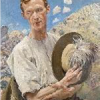Freedom Park
The First Australian General
The First Australian General/Istanbul (not Constantinople) General Sir Henry “Harry” Chauvel was the famous commander of the Australian Light Horse and eventually all the Imperial mounted units in the Sinai and Palestine Campaign. Born in New South Wales in 1865, Chauvel’s parents were graziers and cattle breeders and he grew up working on his parents’ …
The Imperial Camel Corps
The Imperial Camel Corps/Heat, Desert and Water The Imperial Camel Corps was created in 1916 and attached to the Egyptian Expeditionary Force. The first units were formed from Australians returning from Gallipoli using camels from the Indian state of Bikaner (later replaced by Egyptian camels). The camels were ideal in the hot, dry deserts of …
The Australian Flying Corps in the Middle East
The Australian Flying Corps in the Middle East Australia was the only dominion of the British Empire to establish a flying corps in the First World War. The first airmen Australia contributed to the war did not fly was part of the corps. Referred to as the Mesopotamian Half Flight, four officers, 41 men and …
The Legend of the Light Horse
The Legend of the Light Horse/The Waler The horseman has a special place in Australian history and culture. The most famous example is Andrew Barton ‘Banjo’ Paterson. Banjo Paterson’s Clancy of the Overflow and The Man from Snowy River are the most well-known and beloved odes to the horseman in Australian history. The romance …
The Light Horse in Literature & Film
The Light Horse in Literature & Film/Redrawing the Boundaries of the Middle East The Light Horse remained popular in Australian culture long after the First World War ended. They were immortalised in literature in Ion Idriess’s The Desert Column (1932) and Frank Dalby Davidson’s ‘The Wells of Beersheba’ (1933). The film Forty Thousand Horseman was …





